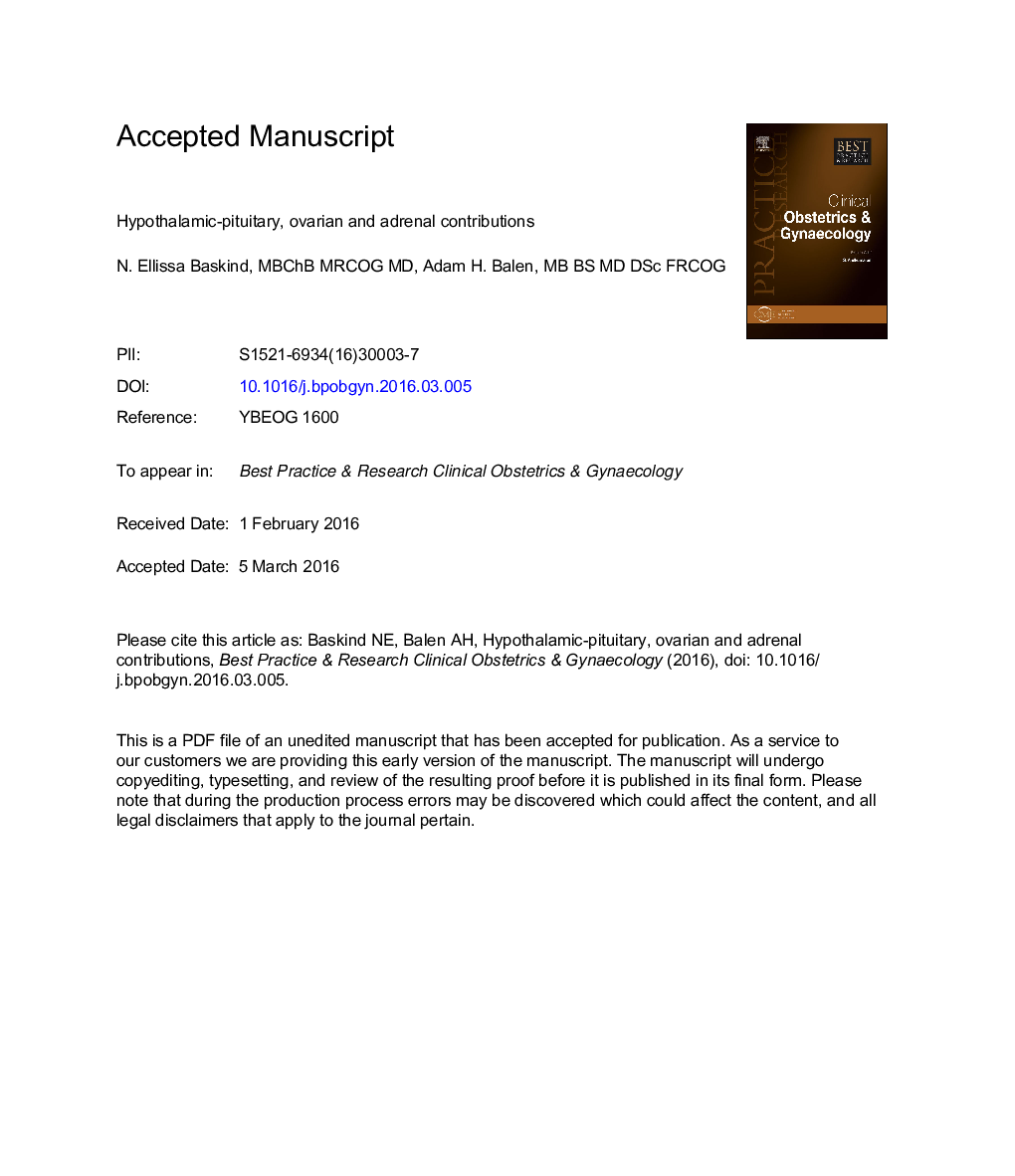| Article ID | Journal | Published Year | Pages | File Type |
|---|---|---|---|---|
| 5688759 | Best Practice & Research Clinical Obstetrics & Gynaecology | 2016 | 51 Pages |
Abstract
Polycystic ovary syndrome (PCOS) is a prevalent heterogeneous disorder linked with disturbances of reproductive, endocrine and metabolic function. The definition and aetiological hypotheses of PCOS are continually developing to incorporate evolving evidence of the syndrome, which appears to be both multifactorial and polygenic. The pathophysiology of PCOS encompasses inherent ovarian dysfunction that is strongly influenced by external factors including the hypothalamic-pituitary axis and hyperinsulinaemia. Neuroendocrine abnormalities including increased gonadotrophin-releasing hormone (GnRH) pulse frequency with consequent hypersecretion of luteinising hormone (LH) affects ovarian androgen synthesis, folliculogenesis and oocyte development. Disturbed ovarian-pituitary and hypothalamic feedback accentuates the gonadotrophin abnormalities, and there is emerging evidence putatively implicating dysfunction of the Kiss 1 system. Within the follicle subunit itself, there are intra-ovarian paracrine modulators, cytokines and growth factors, which appear to play a role. Adrenally derived androgens may also contribute to the pathogenesis of PCOS, but their role is less defined.
Related Topics
Health Sciences
Medicine and Dentistry
Obstetrics, Gynecology and Women's Health
Authors
N. Ellissa (Subspecialty Trainee in Reproductive Medicine and Surgery), Adam H. (Professor in Reproductive Medicine and Surgery),
